Blue Carbon Capture
Fish get their essential omega-3 fatty acids and the carbon source of their protein from marine algae at the bottom of their food chain. Scientists have found that humans can take advantage of it too! The global food crisis is causing scientists to begin looking at marine microalgae to address the problem of greenhouse gas emissions in food production. Marine microalgae, are cultivated using a brackish/marine water source and may be the most sustainable option thus far.
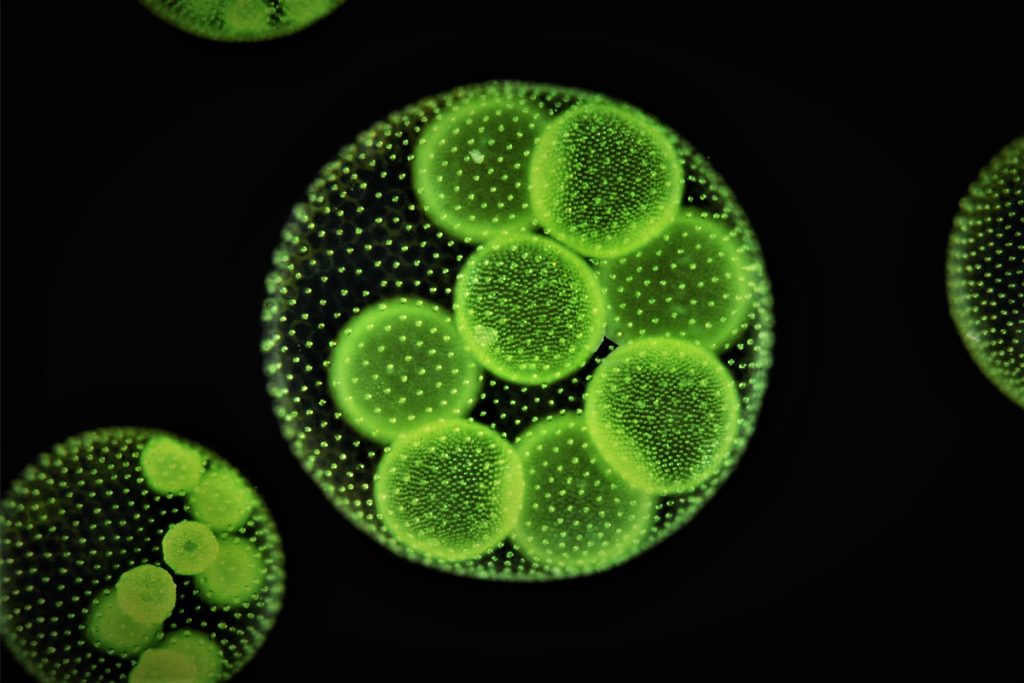
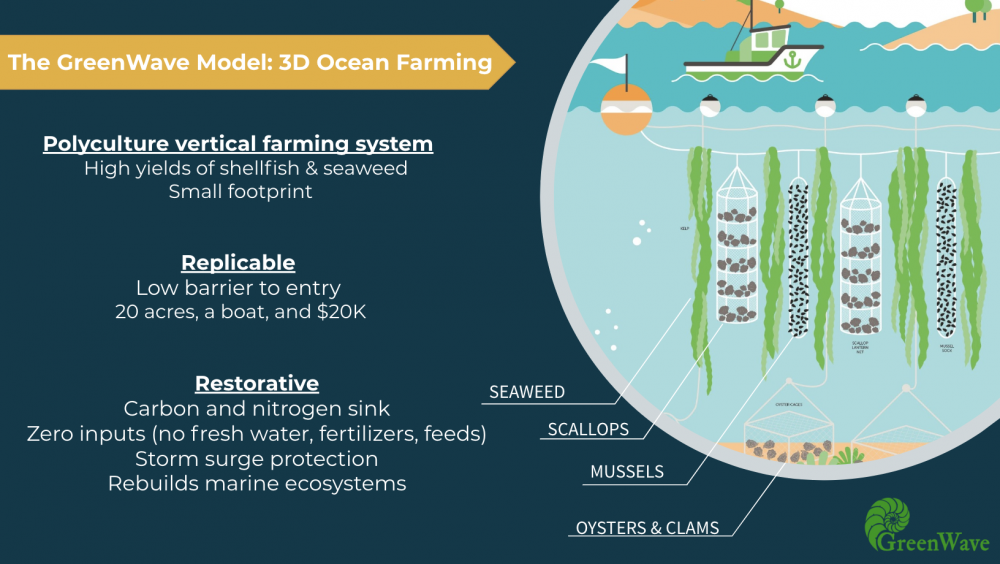
Regenerative ocean farming works to mimic the diversity of ocean reefs by growing a mix of species that act in concert to revive ecosystems. Each crop plays a vital role. For example, a single adult oyster can filter as much as 50 gallons of water a day. Regenerative ocean farms are also safe havens for marine life improving water quality and providing habitats that support millions of aquatic species.
Emissions from the world’s nearly 1.5 billion cattle are a major source of methane, a powerful greenhouse gas. But it turns out that supplementing livestock feed with a small amount of seaweed can reduce methane output by nearly 60% in cattle and up to 80% in sheep. And seaweed converted into fertilizer and compost creates a virtuous nutrient loop, whereby carbon, nitrogen, phosphorus, and other nutrients are collected by kelp and then brought to land to enrich the soil and increase yields.
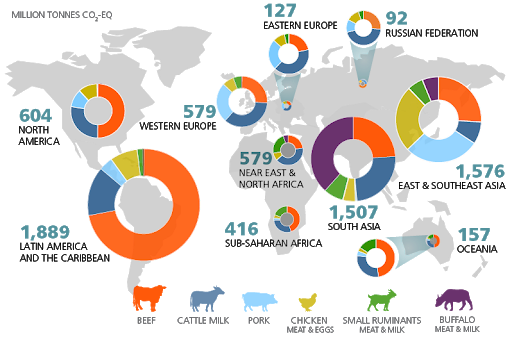
Earth’s Carbon Content: The geologic component of the carbon cycle operates slowly in comparison to the other parts of the global carbon cycle. It is one of the most important determinants of the amount of carbon in the atmosphere, and thus of global temperatures.
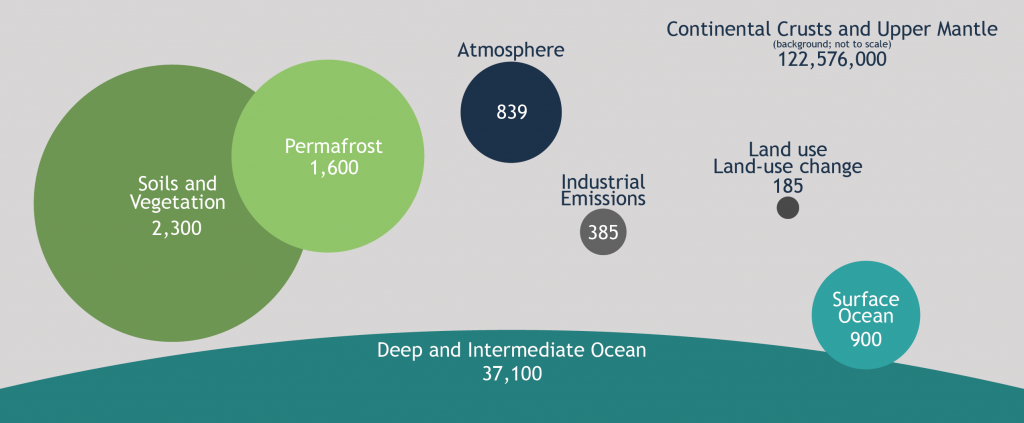
Blue Carbon
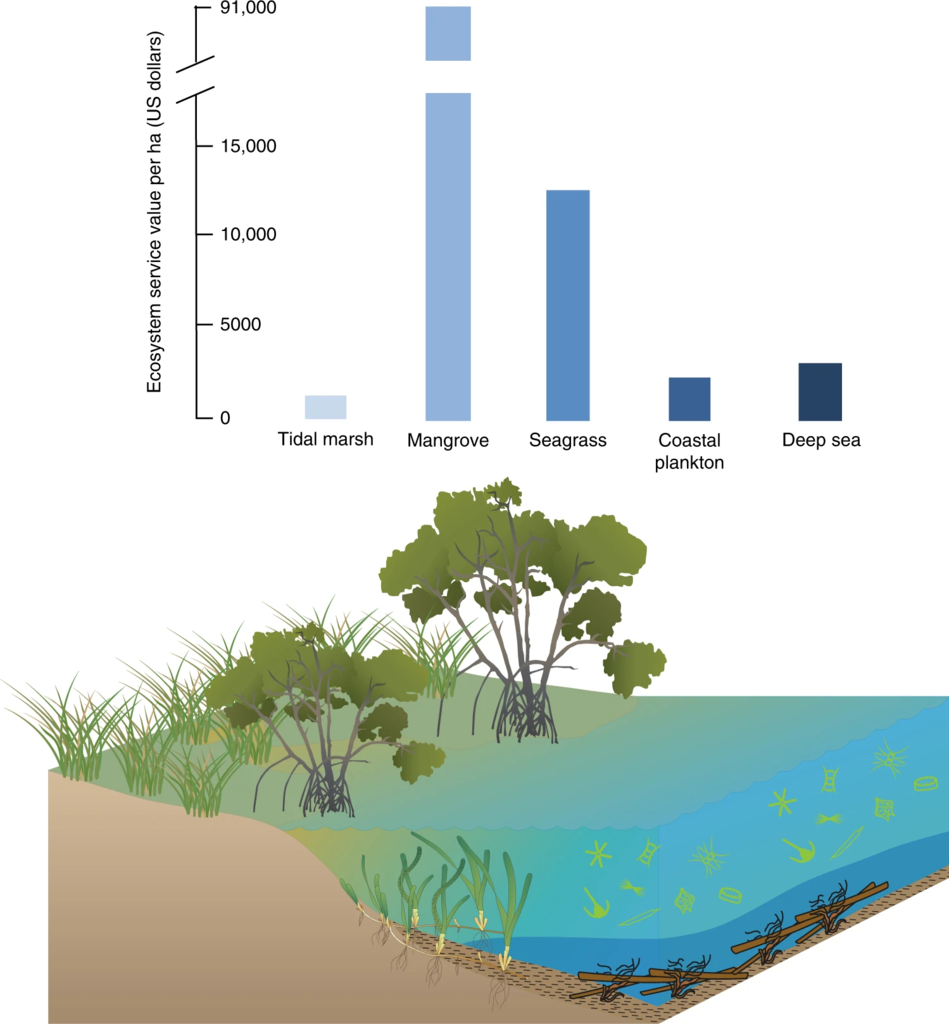
Historically the ocean, atmosphere, soil, and terrestrial forest ecosystems have been the largest natural carbon (C) sinks. New research on the role of vegetated coastal ecosystems has highlighted their potential as highly efficient carbon sinks, and led to the scientific recognition of the term “Blue Carbon”. Blue Carbon designates carbon that is fixed via coastal ocean ecosystems, rather than traditional land ecosystems, like forests. Although the ocean’s vegetated habitats cover less than 0.5% of the seabed, they are responsible for more than 50%, and potentially up to 70%, of all carbon storage in ocean sediments!

